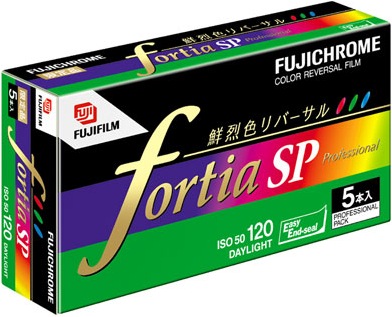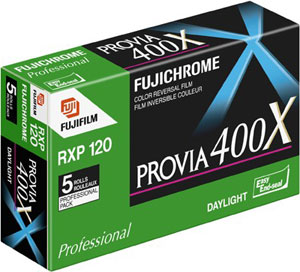
Fuji have re-released the "limited edition" Fortia SP slide film in Japan. It’s ISO 50 (though it’s recommended that you shoot it at 64), has extremely high colour saturation (apparently higher than Velvia 50), and high contrast. It’s available in 35mm and 120 with no plans for distribution outside of Japan.
You can order it from megaperls, though, who carry some other films that are difficult to get outside of Japan, such as Fuji Neopan SS (ISO 100, not Acros) and Fuji Presto 400 B&W films and Fuji Natura 1600 colour print film. It aint cheap, though.
